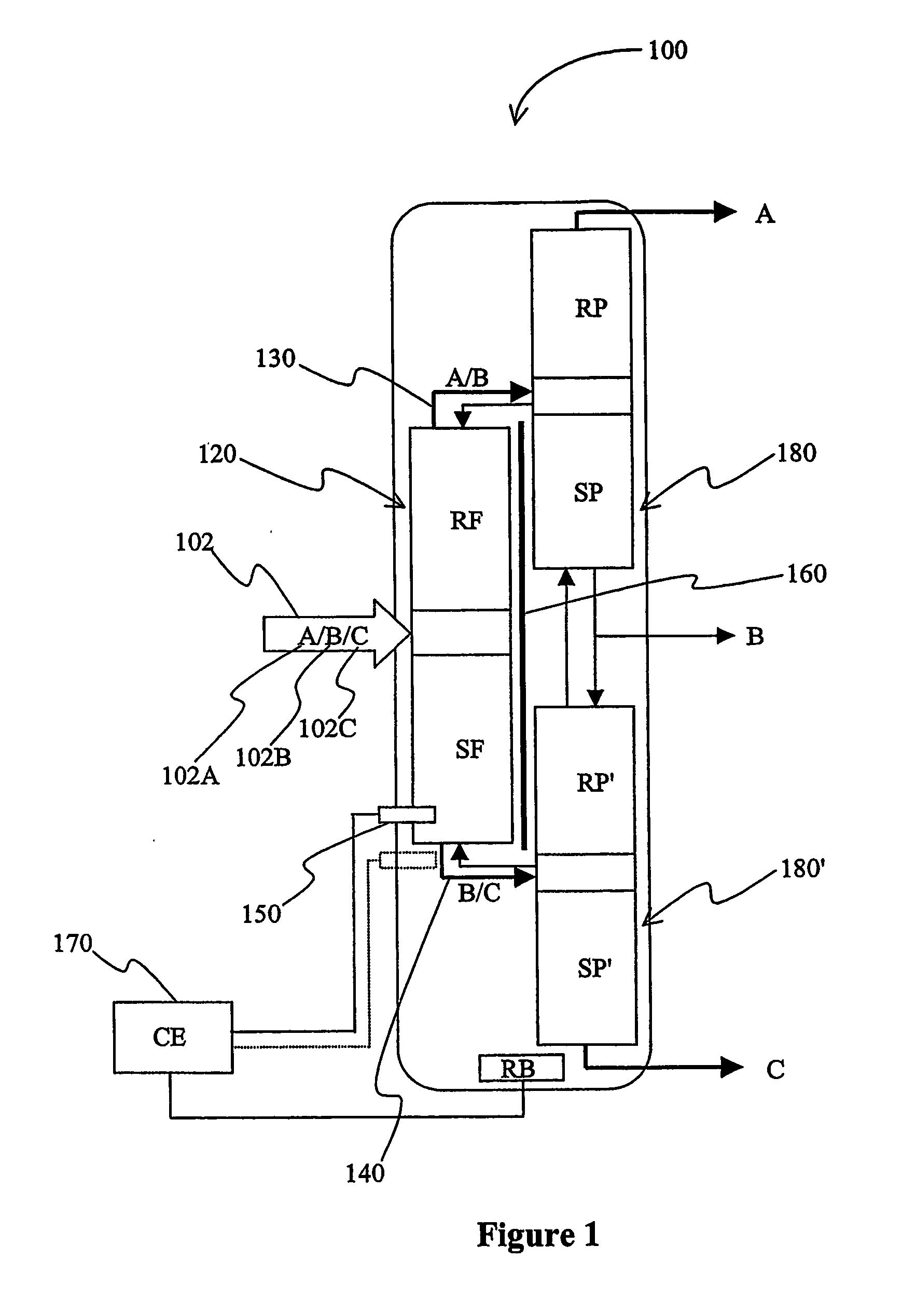Distillation systems
a technology of distillation column and feed component, which is applied in the direction of distillation, separation process, evaporation, etc., can solve the problems of contaminated intermediate products, difficult identification of suitable properties that will adequately correlate with the desired separation on the feed side of the partition, and many years of difficult identification of suitable properties
- Summary
- Abstract
- Description
- Claims
- Application Information
AI Technical Summary
Benefits of technology
Problems solved by technology
Method used
Image
Examples
Embodiment Construction
[0015] As used herein, the term “divided wall column” or “dividing wall column” refers to a distillation system for one or more multi-component feeds in which at least two, and more typically three thermally coupled distillation columns are disposed in a common shell and separate the multi-component feed into at least one light, at least one intermediate, and at least one heavy boiling fraction. Exemplary divided wall columns are described, for example, in U.S. Pat. No. 4,230,533 to Girox, or in a presentation by Becker et al. [The world's larges partitioned column with trays. Linde Reports on Science and Technology 62 (2000), pages 42-48] (infra).
[0016] The inventors have discovered that improved control over traffic of the light, intermediate, and / or heavy boiling fraction in a divided wall column (DWC) can be achieved by thermally coupling a differential vapor pressure (DVP) cell to the divided wall column. More specifically, the inventors contemplate that descent of excess ligh...
PUM
 Login to View More
Login to View More Abstract
Description
Claims
Application Information
 Login to View More
Login to View More - R&D
- Intellectual Property
- Life Sciences
- Materials
- Tech Scout
- Unparalleled Data Quality
- Higher Quality Content
- 60% Fewer Hallucinations
Browse by: Latest US Patents, China's latest patents, Technical Efficacy Thesaurus, Application Domain, Technology Topic, Popular Technical Reports.
© 2025 PatSnap. All rights reserved.Legal|Privacy policy|Modern Slavery Act Transparency Statement|Sitemap|About US| Contact US: help@patsnap.com


